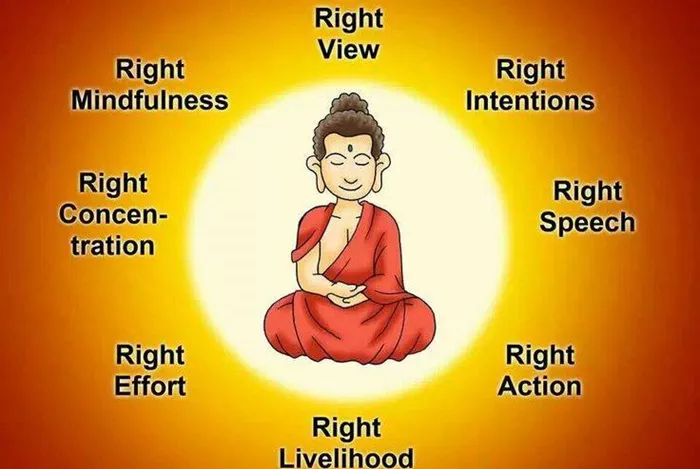The Eightfold Path and the Four Noble Truths form the cornerstone of Buddhist philosophy, guiding practitioners toward liberation from suffering and the attainment of enlightenment. For centuries, these teachings, first articulated by Siddhartha Gautama—the Buddha—have inspired millions across diverse cultures and backgrounds. But who follows these principles in practice? Are they limited to monks in saffron robes, or do they resonate with a broader audience? In this article, we’ll explore who embraces the Eightfold Path and the Four Noble Truths, why they do so, and how these teachings remain relevant today.
What Are the Four Noble Truths and the Eightfold Path?
Before diving into who follows these teachings, let’s clarify what they are. The Four Noble Truths diagnose the human condition and offer a solution:
The Truth of Suffering (Dukkha): Life involves suffering—physical pain, emotional distress, and existential unease.
The Cause of Suffering (Samudaya): Craving or attachment—to pleasure, permanence, or self—fuels this suffering.
The Cessation of Suffering (Nirodha): Suffering can end by letting go of craving, leading to liberation (nirvana).
The Path to the Cessation of Suffering (Magga): The Eightfold Path provides the practical steps to achieve this.
The Eightfold Path itself is a roadmap, often grouped into three categories: wisdom, ethical conduct, and mental discipline. It includes:
Wisdom: Right View, Right Intention
Ethical Conduct: Right Speech, Right Action, Right Livelihood
Mental Discipline: Right Effort, Right Mindfulness, Right Concentration
Together, these principles offer a balanced approach to living ethically, cultivating awareness, and understanding reality. But who takes up this path?
Who Follows the Eightfold Path and the Four Noble Truths?
1. Buddhists
The Eightfold Path and the Four Noble Truths are central to the practice of Buddhism. Buddhists are individuals who follow the teachings of the Buddha, and they regard the Four Noble Truths as the guiding principles of their lives. By adhering to the Eightfold Path, they aim to overcome suffering and achieve enlightenment, or Nirvana.
There are many different schools of Buddhism, such as Theravada, Mahayana, and Vajrayana. While these schools may vary in their interpretations and practices, all share a common foundation in the Four Noble Truths and the Eightfold Path.
2. Monks and Nuns
Monks and nuns are those who have devoted their lives to the monastic path of Buddhism. They live according to the rules and guidelines set out by the Buddha, which includes following the Four Noble Truths and the Eightfold Path. Their life is focused on meditation, study, and service to others, with the goal of reaching Nirvana.
Monastics often spend their days in quiet contemplation, meditation, and ethical living, striving to overcome desire and attachment through the practices of the Eightfold Path.
3. Lay Practitioners
Lay practitioners are non-monastic Buddhists who live in the world while adhering to the principles of Buddhism. While they may not follow the monastic lifestyle, they can still practice the Eightfold Path by maintaining ethical conduct, cultivating mindfulness, and developing compassion for others. Many lay Buddhists engage in meditation, attend teachings, and support the monastic community.
4. Anyone Seeking Liberation from Suffering
Ultimately, anyone who seeks to end suffering and attain spiritual freedom can follow the Eightfold Path and the Four Noble Truths. These teachings are universal and can be embraced by individuals from any background, culture, or religion. Whether someone is facing personal suffering, social inequality, or existential questions, the Four Noble Truths provide a framework for addressing life’s difficulties with wisdom, compassion, and equanimity.
The Relevance of the Four Noble Truths and Eightfold Path Today
The teachings of the Four Noble Truths and the Eightfold Path are just as relevant today as they were when the Buddha first taught them over 2,500 years ago. In our fast-paced, material-driven world, people still face suffering in various forms: stress, anxiety, relationships, illness, and more.
By practicing the Eightfold Path, individuals can cultivate a life of balance, wisdom, and peace. Right mindfulness, right speech, and right action can help individuals navigate the challenges of modern life, fostering greater harmony in personal relationships and communities.
Moreover, the emphasis on ethical conduct and mental discipline in Buddhism offers valuable insights for living with integrity and compassion. The practice of mindfulness has also gained widespread popularity in recent years, particularly for its mental health benefits.
Conclusion
The Four Noble Truths and the Eightfold Path form the heart of Buddhist teachings and provide a clear path for overcoming suffering. Whether one is a monk, a lay practitioner, or simply someone seeking meaning in life, these teachings offer profound guidance for living with wisdom, compassion, and mindfulness.
The teachings of the Buddha encourage us to recognize the nature of suffering, understand its causes, and cultivate the right attitudes and behaviors to end it. Through following the Eightfold Path, we can gradually transform our lives, leading to inner peace and, ultimately, liberation from suffering.

